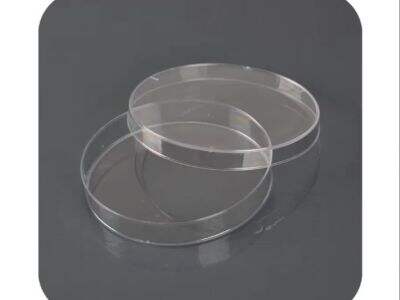Petri dishes are very cool little tools scientists use to grow tiny creatures called bacteria. They are the typical dish, either round glass or plastic. Today, we will be going over the pros and cons of both polystyrene (what you are probably used to seeing) and glass petri dishes.
Стъклени петриеви панички
A Glass petri dish is made with a specific type of glass that's obviously, see-through and glossy. They can be a bit pricier than petri dishes made of plastic, but they offer some fantastic advantages that make it all worthwhile.
On of the best part about glass petri dishes is that yo can reuse them. you grow your bacteria in them, gentle clean and recycle. This is extremely important for the Earth as it is aiding in plastic waste reduction. Reusing things is good for the environment and that means a clean, healthy planet.
Glass petri dishes are also very strong as well and will endure for quite a while. Glass Петри are common amongst scientists, they know they wont break to quickly. In other words, they trust them to protect their experiments and not let results get mixed up.
Пластмасови петриеви панички
However, plastic petri dishes are constructed from a clear but flimsy material. But they are typically more cost-effective than glass petri dishes and PCR плака documentary can give useful-functions as well.
The one that we use in the lab is a clear plastic petri tossed dish into an autoclave and sterilized before being used again. These can then be discarded after they are used to culture bacteria. This keeps the code base extremely clean while boosting productivity for those who wish to do so during their experiments. This time saving solution merits more exploration to see if the majority of our customers do not want their food on expensive and wasteful plates.
One more reason I'm posting this, is to demonstrate how useful it can be and what you also get is that plastic petri dishes are super stackable and pack-able. They are also quite light, so you can pile them up and they won't turn into a solid block of iron. This is incredibly convenient for lab or classroom settings to keep the samples organized and always on hand.
Advantages of Using Glass Petri Dishes
For those who times glass petri dishes many, many times. Now, this is good for the environment in terms of waste, but if you think about it, it also saves money. For Scientists they save money on their budgets (no need to keep purchasing dishes).
Glass petri dishes are less likely to scratch than plastic_petri_dishes, thereby having an advantage here. Even small scratches can form micro-cavities that harbor bacteria and thus seriously interfere with experiments and ultimately render results unreliable. Glass dishes let the scientists ensure that their experiments would not have any issues.
Why to Use Plastic Petri Dishes
When the experiments called for high cleanliness and sterility, we used plastic petri dishes and Вакутейнер тръба. This way you can get rid of them after use so there is no mixing up bacteria over one experiment to the other. For scientists, this is instrumental as precision and accuracy matters the most.
I learned that the hard way, when I forgot to sterilize my petri dishes before autoclaving (plastic petri dishes come sterile, in addition to normal heat-sealing). That way, when a scientist is ready to use one, they can break it open near whatever sample or experiment they have without worrying that germs are present.
Най-доброто от двата свята
The glass and plastic Petri dishes can have unique qualities that make one preferable to the other depending on what you need for your research, and in which case? I thought the glass petri dishes since they are sturdy in fact Rewashable can also be more environ friendly. So conversely plastic petri dishes are great, they can be thrown out after using and disposal is simple.
In addition to Kangwei Medical with separated glass and plastic Petri dish barrels, lets feel the world of experiments. you can choose between the durability of glass or the convenience of plastic for your petri dish. Well, grow your bacteria, and we are here with starting materials for you.

